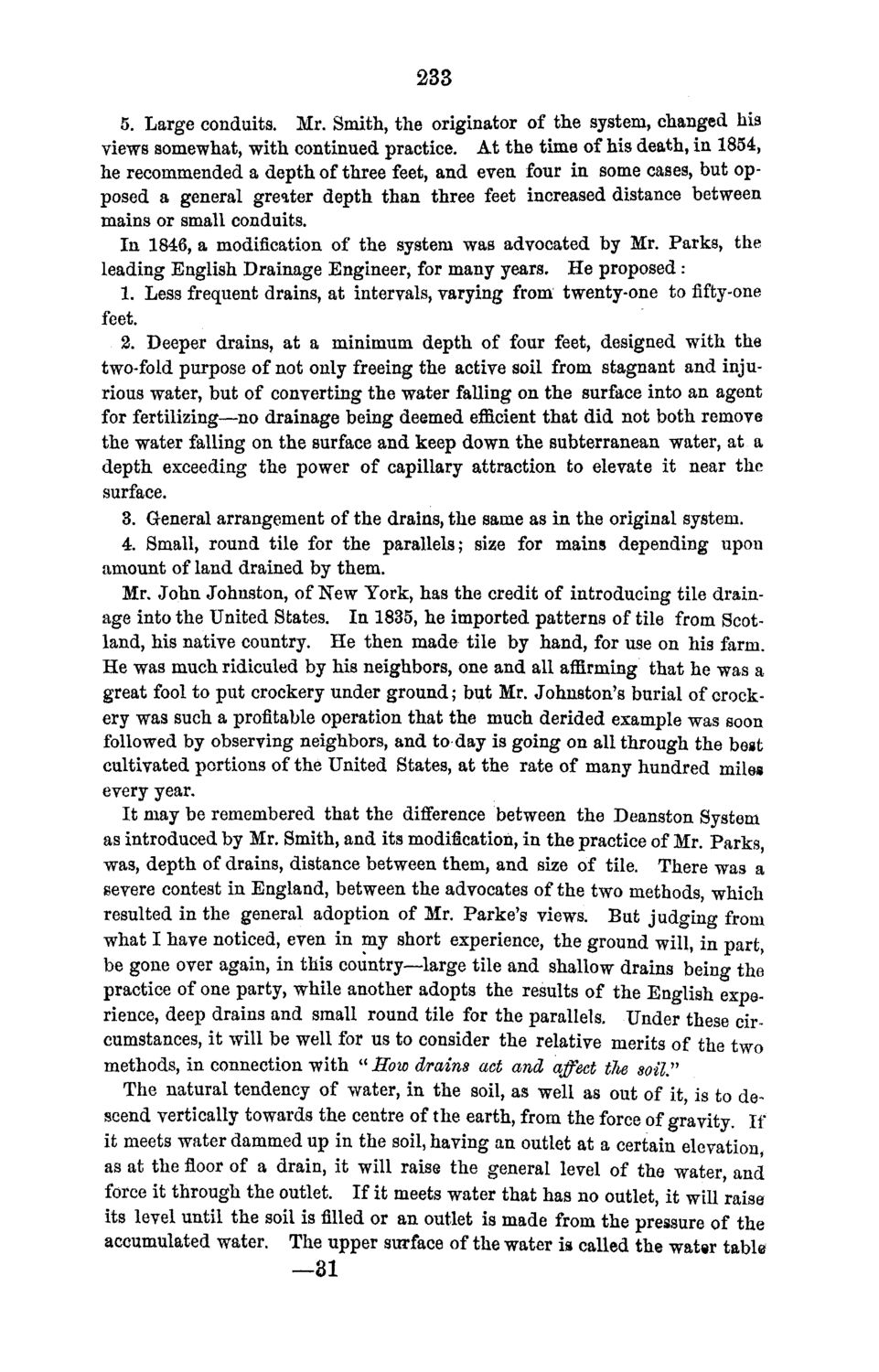| |
| |
Caption: Board of Trustees Minutes - 1870
This is a reduced-resolution page image for fast online browsing.

EXTRACTED TEXT FROM PAGE:
233 5. Large conduits. Mr. Smith, the originator of the system, changed his views somewhat, with continued practice. At the time of his death, in 1854, he recommended a depth of three feet, and even four in some cases, but opposed a general greater depth than three feet increased distance between mains or small conduits. In 1846, a modification of the system was advocated by Mr. Parks, the leading English Drainage Engineer, for many years. He proposed : 1. Less frequent drains, at intervals, varying from twenty-one to fifty-one feet. 2. Deeper drains, at a minimum depth of four feet, designed with the two-fold purpose of not only freeing the active soil from stagnant and injurious water, but of converting the water falling on the surface into an agent for fertilizing—no drainage being deemed efficient that did not both remove the water falling on the surface and keep down the subterranean water, at a depth exceeding the power of capillary attraction to elevate it near the surface. 3. General arrangement of the drains, the same as in the original system. 4. Small, round tile for the parallels; size for mains depending upon amount of land drained by them. Mr. John Johnston, of New York, has the credit of introducing tile drainage into the United States. In 1835, he imported patterns of tile from Scotland, his native country. He then made tile by hand, for use on his farm. He was much ridiculed by his neighbors, one and all affirming that he was a great fool to put crockery under ground; but Mr. Johnston's burial of crockery was such a profitable operation that the much derided example was soon followed by observing neighbors, and to day is going on all through the best cultivated portions of the United States, at the rate of many hundred miles every year. It may be remembered that the difference between the Deanston System as introduced by Mr. Smith, and its modification, in the practice of Mr. Parks was, depth of drains, distance between them, and size of tile. There was a severe contest in England, between the advocates of the two methods, which resulted in the general adoption of Mr. Parke's views. But judging from what I have noticed, even in my short experience, the ground will, in part, be gone over again, in this country—large tile and shallow drains being the practice of one party, while another adopts the results of the English experience, deep drains and small round tile for the parallels. Under these circumstances, it will be well for us to consider the relative merits of the two methods, in connection with "Bow drains act and affect the soil" The natural tendency of water, in the soil, as well as out of it, is to descend vertically towards the centre of the earth, from the force of gravity. If it meets water dammed up in the soil, having an outlet at a certain elevation as at the floor of a drain, it will raise the general level of the water, and force it through the outlet. If it meets water that has no outlet, it will raise its level until the soil is filled or an outlet is made from the pressure of the accumulated water. The upper surface of the water is called the water table —81
| |